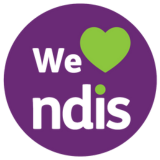
SIL vs Other NDIS Living Options: A Comparison Based on Independence, Costs, and Supports
When it comes to NDIS housing and supports, there’s no one-size-fits-all approach. Each participant’s goals, needs, and preferences are different, which is why the NDIS funds a range of living options. One of the most common is Supported Independent Living (SIL). But how does it compare to Individualised Living Options (ILO), Specialist Disability Accommodation (SDA), or simply living in mainstream housing with supports?
This article breaks down the differences in independence, costs, and supports to help you or your loved one work out which option might best fit your needs. At Nextt, our friendly team can help you explore your options. We have SIL housing available in Melbourne, Adelaide, Sydney, and Brisbane.
What is Supported Independent Living (SIL)?
Supported Independent Living (SIL) is NDIS funding for daily support provided primarily in shared housing. It is designed for people who need regular, and often 24/7, assistance with everyday tasks.
SIL supports may include:
-
Help with cooking, cleaning, and household management
-
Personal care, such as showering, dressing, or taking medication
-
Support to participate in community activities
-
Development of independence skills over time
Importantly, SIL funding covers support staff only — not rent, groceries, or utilities. Participants are usually expected to contribute to housing and living costs (e.g., through the Disability Support Pension and Commonwealth Rent Assistance). SIL is most often provided in a shared home, but arrangements for individual SIL exist in some cases.
Other NDIS Living Options
Individualised Living Options (ILO)
A flexible package of supports that allow you to design your preferred living arrangement. You could live with a housemate, in a host family, or on your own with supports arranged around your lifestyle. ILO usually suits people who don’t need 24/7 help but still require structured support.
Specialist Disability Accommodation (SDA)
Specially designed or modified housing for people with extreme functional impairment or very high support needs. SDA funding pays for the home itself (bricks and mortar), not the support staff. Most SDA residents also receive SIL, ILO, or other supports on top.
Mainstream housing with supports
Participants may live in private rentals, public housing, or with family, arranging drop-in supports through their NDIS plan. This option works best for those with lower support needs who want maximum independence.
Independence: Choice and Control
-
SIL
Provides a balance between support and independence. Staff are available most or all of the time, and while the aim is to build independence, shared decision-making is often required because most SIL involves living with housemates. -
ILO
Generally allows more flexibility and control. Supports can be tailored around your preferences, such as support workers visiting only when needed. -
SDA
The focus is on the physical accessibility of the home. Levels of independence depend entirely on the type and amount of supports (SIL, ILO, etc.) arranged. -
Mainstream housing with supports
Offers the greatest independence if only minimal assistance is needed. However, participants (or their informal supports) must be able to manage tenancy responsibilities and daily living arrangements.
Key takeaway
SIL suits people who need structured daily help and don’t mind sharing a household. ILO or mainstream options may be better suited for lighter support needs and more household control.
Costs: What the NDIS Covers vs Personal Costs
-
SIL: NDIS funds the supports. The participant covers rent, food, utilities, and personal expenses. Rent contributions often follow NDIS rules linked to pensions and rent assistance.
-
ILO: Similar to SIL, ILO covers the supports but not rent or daily expenses. Because supports are tailored, ILO may use fewer hours and less funding — but it is not suitable if intensive daily support is required.
-
SDA: NDIS pays providers directly to cover the cost of building or modifying the housing. Participants still contribute reasonable rent, and they need separate NDIS funding for supports (such as SIL or ILO).
-
Mainstream housing with supports: Participants cover all housing costs fully (rent or mortgage, utilities, household bills). NDIS only funds the support hours.
Key takeaway: In every model, you pay your own daily living costs. The main difference lies in the level of NDIS-funded supports you receive.
Supports: Level of Assistance
-
SIL: Best for people who need daily or overnight support. Highly structured and consistent.
-
ILO: Supports are highly flexible and personalised but not intended for 24/7 intensive care. Requires a formal Exploration & Design stage before approval.
-
SDA: The house itself is highly accessible, but supports must be arranged separately through SIL, ILO, or other funding.
-
Mainstream housing with supports: Works best if you only need a few hours per week or occasional help.
Key takeaway: SIL provides the most structured daily support. Other models work best for participants seeking more choice or requiring less intensive assistance.
How to Decide Which Option Fits You
When considering SIL and other living options, ask yourself:
-
How much support do I actually need each day?
-
Am I comfortable living with housemates, or do I prefer living alone or with family?
-
Do I require purpose-built housing for accessibility?
-
Can I manage housing costs if living outside of SDA or SIL-supported homes?
Some providers offer short-term accommodation or respite stays in SIL environments, giving participants the chance to trial arrangements before committing. Availability varies by provider and location across Australia.
How Nextt Can Help
Supported Independent Living is one of the most common NDIS support models, but it’s not the only one. The right choice depends on your support needs, independence goals, and personal budget.
-
Choose SIL if you need structured daily support and are comfortable with shared living.
-
Choose ILO if you want flexibility and less intensive support.
-
Choose SDA if you require a specialised, accessible home due to high physical needs.
-
Choose mainstream housing with supports if you want the most independence and can manage with minimal assistance.
At Nextt we can help you explore your options. With the right information, you can choose a home and support arrangement that helps you live the life you want.
Category
Supported Independent Living
Read time
5 minutes
Publish Date
September 23, 2025




